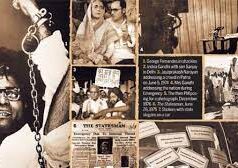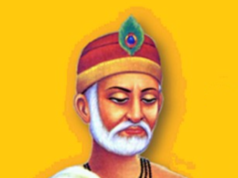
To begin the discourse, Ambedkar defines nationalism as “a feeling…..a feeling of the corporate sentiment of oneness which makes those who are charged with it feel that they are kith and kin. It is a feeling of consciousness of a kind which on the one hand binds together those who have it and on the other, serves them for those who are not of their kind. It is a longing not to belong to any other group”. This kind of perception envisions nationalism as a matter of cumulative effect of the driving force of history, and hence, is possessed of underlying organic unity, which can best be expressed in term of Hindu – not strictly in the religious sense – leave aside its dogmatic and ritualistic dimensions. Here the nomenclature Hindu refers to a geo-cultural worldview tantamount to veritable Indian nationalism.
Myopic critics refer to burning of Manusmriti by Ambedkar in 1936. But it is to be recalled that out of 2685 verses of contemporary Manusmriti 1471 were distorted (Umesh Patri, Veda and Bible, p.86). Moreover, Ambedkar testified progressive development of thought process since 1936; otherwise, he would not have visited one RSS camp and attended ‘Makar Sankranti Utsav’ at Pune along with Dr Hedgewar in 1939. He acknowledged that RSS attempt to eliminate untouchability conformed assimilative procedure, but he was hurried to achieve it.
Ambedkar’s Hindu Worldview
Dr Ambedkar’s worldview on Hindu phenomenon transformed perceptibly in the years to come. By 1948 when Ambedkar scripted “Who are the Sudras? How the Fourth Varna Came?” he had transformed the stand undertaken in 1936. He embarked upon the Puranas and the Shastras for this work. He clubbed the Shudras, out of his study, the solar dynastic Kshatriyas. He quotes ‘Purusha Sukta’ that the Indo-Aryan nation was composed of five tribes, which had been assimilated into one common Indo-Aryan people. These
Tribes denote the Gandharvas, Pitris, Devas, Asuras and Rakshas. His study of the caste problem involves four points, viz,
• Despite the composite makeup of the Hindu population, there is deep cultural unity.
• Caste is parcelling into bits of larger cultural unity,
• There was one caste to start with.
• Classes have become castes through imitation and examination.
More importantly, in the same work, Ambedkar dared the Aryan invasion theorists to come up with evidence. He ridiculed this theory as a figment of the imagination of the colonial super-structure. To him, Arya is a measure of culture and not the name of a race. He denied that a racial or colour basis was behind the emergence of the caste factor. He studied that the people in the south of India were always called Arya. It is noticed seriously that unlike the Marxists he did not comprehend the Dalit factor in term of class. This kind of approach finds a striking resemblance with the contention of the Hindu nationalists.
To Ambedkar, people in this vast territory known as ‘Jambudvipa’ in Purana had the same culture though they differed in their dresses, language, food habits for their culture was moulded and highly influenced by the long civilisational chord of India, having origin in different parts of this vast territory and they were bound together by the same thought, same way of thinking, same way of logic and regular exchange of views.
Hindu Unity and ‘Hindutva’
Ambedkar corroborates with Savarkar’s formulation of Hindutva. According to Savarkar, “The followers of Vedicism, Sanatanism, Jainism, Buddhism, Linguism, Sikhism, the Arya Samaj, the Deva Samaj, and such other religions of Indian origin are Hindus, and constitute Hindudom, ie., the Hindu people as a whole – consequently the so-called aboriginal or hill tribes are also Hindus; because India is their Fatherland (‘pitribhu’) as well as their Holy Land (poonyabhu’), whatever form of religion or worship they follow”.
Keeping this study in mind, while speaking on the Hindu Code Bill in the Provisional Parliament in 1951, Ambedkar urged the members to have a common civil code which could do away with the rules of Hindu Law scattered in innumerable (judicial) decisions. Moreover, it would include in it the Vira Shaivas or Lingayata, Brahmo Samaj, Prarthana Sabha, Arya Samaj as well as Bauddhas, Jainas and Sikhs. Therefore, his plea was that simply provision enacting temple entry of the untouchables is not enough. “All that can do is to recognise them as nationals and not aliens”, he stated.
When Ambedkar introduced the Hindu Code Bill, one Sikh Member, Sardar Hukum Singh, observed that the Bill was a dubious attempt on the part of the Hindus to absorb the Sikhs. Ambedkar replied, “The application of Hindu Code to Sikhs, Buddhists and Jains was a historical development, and it would be too late, sociologically, to object to it. When the Buddha differed from the Vedic Brahmins, he did so only in matters of creed but left the Hindu legal framework intact. He did not propound a separate law for his followers. The same was the case with Mahavir and the ten Sikh ‘gurus’”.
Earlier a division had taken place regarding the position of uniform civil code in the Fundamental Rights Committee of the Constituent Assembly. 4/5 majority decided to keep it outside the ambit of the Fundamental Rights. The four dissenting voice was led by Ambedkar. The dissenting note read, “One of the factors that have kept India backward from advancing to nationhood has been the existence of personal laws based on religion which keeps the nation divided into water-tight compartments into many aspects of life. We are of the view that a uniform civil code should be guaranteed to the Indian people within a period of five to ten years”.
Dr Ambedkar was out and out against cow slaughter so much so that he regarded cow as parents and revered friend.
Prof. Balraj Madhok makes an appraisal thus: ”He (Ambedkar) was an admirer of humanistic Vedic thought and culture. He, therefore, did not get out of the broad commonwealth of Hinduism which included all sects and ‘panths’ of Indo-Vedic origin. He ultimately embraced Buddhism, which provided him full scope for mental, moral and spiritual growth through the pursuit of ‘Dhamma’ as interpreted by Mahatma Buddha without getting alienated from the broad stream of Hindu culture” (Organiser, 27.04.2003). Throbbing Ambedkar’s bid Koenraad Elst is given to understand that “the religious development and deepening of neo-Buddhism and the process of social reform and psychological modernisation in Hindu society ensures that the two will meet again in the not too distant future”. (Who is a Hindu? p.316). Thus Ambedkar emerges as Martin Luther and John Calvin in the annals of Hindu nationalism.
Against the Breaking India Forces
Ambedkar became extraordinarily vocal when the Muslim League clamoured for Pakistan in its Lahore session. As a matter of reaction, he wrote down a voluminous work entitled “Thoughts on Pakistan” in 1941 which he revised in 1946 under the title “Pakistan, or Partitioning India”. He frequently employed the expression “Hindu India” in this work. In his words, “On the 26th of March 1940, Hindu India was startled to attention as it had never before”. “…the scheme not only called Hindu India to attention, but it also shocked Hindu India”.
Ambedkar put a question in this context, “The partition of Bengal was abrogated in 1911 by the British who yielded to the Hindus who were opposed to it…If the partition of Bengal had not been annulled, the Muslim State in Eastern Bengal…would now have been 39 years old..: ”The Hindu sentiment is quite natural, that is to claim India as a nation, which was denied by the Anglo-Indians”. “It may be open to Hindus to ask Mr.Jinnah, if he is in favour of a Muslim majority in Muslim Provinces, why is he opposed to a Hindu majority in the Centre ?..The abandonment of a principle of majority rule in politics cannot affect the Hindus very much in other walks of life. As an element of social life, they will remain a majority”. Ask any Hindu …he would opt for a United India”.
Ambedkar devoted Chapter IV of his work Pakistan, or the Partition of India under the title “Break-up of Unity” recalling rampant Islamic rampage in India quoting massively from Dr Titus’s “Indian Islam”. Keeping this backdrop in mind, he argued in favour of vivisection of India thus: ”The association of Muslims in the Army would be disadvantageous to Hindustan.. A safe Army is better than an unsafe border…Can the Hindus depend upon such an Army (composed of Muslims) to defend the country against the invasion of Afganistan ?…The realist must take note of the fact that the Musalmans look upon the Hindus as kafirs, who deserve more to be exterminated than protected”.
Benefactor of Hindu Nationalism
Earlier Ambedkar was also contemplating to embrace Sikhism. In his words, “If the Depressed Classes join Islam or Christianity, they not only go out of the Hindu religion but also Hindu culture. This is by no means a small disadvantage to the Hindus”. These remarks exhibit his attachment to Hindu culture, or rather Indianness, which he was not prepared to give up observes Madhu Lemay.
Ambedkar had to wait till October 15, 1956, two months earlier to his sad demise, when he embraced Buddhism along with his followers. He expressed, “Buddhist religion is an integral part of Indian culture itself. I have taken all care to see that this conversion does not harm this country’s culture, history and tradition”. The conversion took place at Ramtek, near Nagpur, which was erroneously interpreted by some critics as to flex muscle in the citadel of RSS.
Ambedkar was careful that “any division in our country will again deprive us of our freedom. As a result of several centuries of slavery it is possible that several distortions like discrimination between high and low, economic disparities, backwardness and casteism crept into our society. But if some foreigners try to use these as a tool to deprive us of our identity, we shall not allow this to happen. We shall frustrate their intentions. It is our domestic matter and, therefore, we shall not become tools in the hands of foreigners. We have to be cautious about those who act as Jaichands among us. We should well realise the interest of the nation and the society of which we are part and parcel.” He corroborated with the Hindu nationalists that enslavement of India began with Islamic invasions. Further, like the typical Hindu nationalists, Ambedkar distinguished between religion and Dharma and felt the need of both.
Once in 1949 when Ambedkar reached Bombay airport, a delegation met him to make the saffron flag as the national one. He received a piece of the saffron flag from them and remarked, “On my point, I would advocate the adoption of this flag. However, my advocating would not suffice; it would have to be a big people’s movement. It is only then my proposal would be strengthened”.
Ambedkar had integrating tendency, a ‘sine qua non’ to the Hindu nationalists while making claims for the Depressed Classes. Even he sought to incorporate the Muslims in the mainstream of our national life so much so that they belong to the same racial stock. However, he spurned the minority syndrome as usually raised by the secularists.
Ambedkar displayed communities of views along with the Hindu nationalists not only on the wider wavelength of Indian nationalism, but every issue is entailing it which may be probed as a matter of perusal. Selective references on him would only lead to fallacious representation, and surprisingly he is phenomenally distorted by the mainstream secularists and casteists to gain currency. It is high time Ambedkar might be studied in entirety and scrutinised with critical reasoning, and not mere bank on his dismissal of dogmatic, ritualistic dimensions of Hinduism. He surfaces as a genuine benefactor to the cause of Hindu nationalism in right perspective.
Source: Organiser














